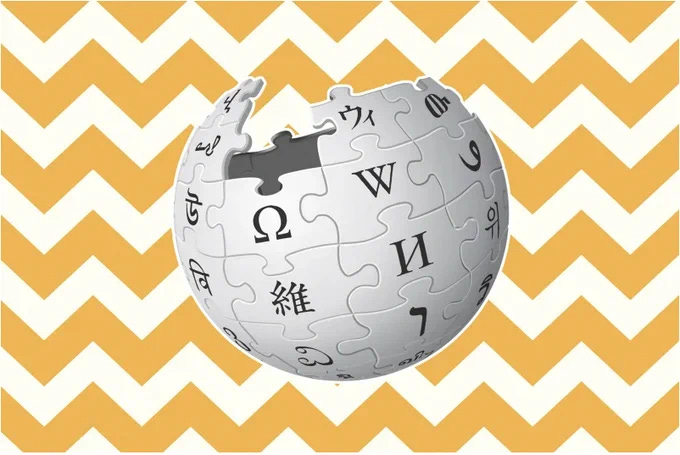How Wikipedia got volunteers to create 55 million articles
👋 Hey, it’s Jaime. Wishing you a very happy 2024, and welcome to my weekly newsletter where I share how thriving open source projects grow their communities.
If you’re not a subscriber yet, here’s what you have missed from past newsletters:
Why inviting others to steal your ideas can propel you forward
How FreeCodeCamp created one of the largest online community media
Subscribe to get access to these posts, and all future posts.
In this week’s newsletter, we’ll cover how Wikipedia motivated volunteers to write millions of articles, and what we need to focus on when starting a community when we’re still small.
Read time: 6-ish minutes
Wikipedia is one of the top 10 most-visited websites, above Netflix, Linkedin, Ebay and Amazon.
It generates over 18 billion page views and 500 million unique visitors a month, and its volunteers have created more than 44 million articles.
But how did Wikipedia pull it off?
Here are three key ideas to help you understand how communities attract volunteers:
1/ Focusing on the hard side vs. the easy side.
The hardest part of creating a platform, community, or networked project is enrolling the minority of members who create disproportionate value and thus impact.
The "hard side" of a community is made up of the people making most of the work and contributions. But these people are also much harder to attract and retain than the people who just "consume."
For example, if you look at projects like Unsplash, the hard side are the photographers creating the high-quality images everyone else consumes.
For social networks, these are often the content creators that generate the media everyone consumes.
For open-source projects, these are folks contributing code or fixing bugs.
For marketplaces, these are the sellers and providers who spend their time attracting buyers.
But not all creators are made equal.
You might not know that all of Wikipedia—with more than 55 million articles—was written by a small group of users.
Not just small, but tiny.
In “Creators, Synthesizers, and Consumers,” Bradley Horowitz, described the 1 percent of users who create vs. everyone else:
1% of the people create most of the content.
9% of the people casually participate.
90% of people just observe ("lurkers").
This is often called the “1/10/100” rule, and it’s no surprise that the 1 percent of highly engaged users is extremely precious.
And the rule applies to most “groups,” such as friend groups, political parties, social networks, and countries.
In Wikipedia, it's even more extreme. There are:
Hundreds of millions of users per month.
About 100,000 active contributors.
And an even smaller group of 4,000 writers who make more than 100+ edits in a month.
So active contributors make up only 0.02% of its users.
So the hard side of a network is essential to understand, not just for Wikipedia, but for any new community.
Without this critical group, a community will struggle to get off the ground.
You might go so far as to say they are the most important group of members to start with.
Why is there a hard side at all?
Hard sides exist because there are tasks in any community that just require more work, whether that’s organising projects, creating content, or selling products or services.
Users on the hard side have complex workflows, expect status benefits and sometimes financial outcomes, and will try other services or products to compare.
As a result, their expectations are higher, and it’s difficult to engage and retain them.
The good news is that the hard side of the network creates a tonne more value.
So how has Wikipedia attracted, retained, and kept editors and article writers happy?
By understanding the non-financial motivations of their volunteers.
2/ What motivates contributors?
Let's look at Wikipedia's most active editor: Steven Pruitt.
Steven Pruitt is a Records and Information Officer for US Customs and Border Protection.
In his spare time, he edits Wikipedia, but it’s more like a part-time job.
His contributions to Wikipedia in 2019 amounted to nearly 3 million edits on Wikipedia and 35,000 original articles.
It’s earned him not only accolades but almost legendary status on the internet.
Pruitt was named one of the most influential people on the Internet by Time magazine in part because he has edited a third of all English-language articles on Wikipedia.
He spends three hours a day researching, editing, and writing. But how much does he earn by doing this?
Nothing. He's a volunteer editor.
So why do Steven and other volunteers do it? Wikipedia doesn't pay editors, so the motivation is not financial. Nor is it utility, since there are easier and simpler ways to publish content online.
My guess, after spending years navigating online communities, is that volunteers are motivated by the community itself.
Communities provide tonnes of social feedback, status, and other dynamics that encourage editors and volunteers to keep creating content.
And the more they contribute, the more influence they gain.
Wikipedians get to show their expertise, and the community will thank them for it.
This provides status and self-expression.
Volunteers can make edits to correct others, which offers another form of status and satisfaction.
Teamwork and a feeling of camaraderie create bonds that retain users over months and years.
By day, Steven Pruitt, the wildly prolific Wikipedian, might have just a normal job.
But in the evenings and weekends, he is one of the most important contributors to one of the largest websites in the world.
If you're a community creator, you have to put much more effort into enrolling creators than consumers, who are generally easier to attract and retain.
But how can you go about inviting and keeping these power creators happy?
3/ Questions to ask to find your “hard side”
Who is the hard side of your community, and how will they use what you're creating?
What is the unique value proposition to the hard side? (And in turn, the easy side of the network.)
How do they first hear about the project, and in what context?
The questions will change as the community grows. The challenge is not attracting people anymore; it is about how to retain them:
Why will they come back more frequently and become more engaged?
What makes them remain in your community when an alternative emerges?
These are complex questions and require a deep understanding of the motivations of your members.
The hard side's motivations depend on the kind of community you’re gathering—content creators have different goals than marketplace sellers.
Needless to say, acquiring the hard side of the network and keeping them happy is paramount to forming your community’s foundation.
The hardest part about creating a community, open source project, or whatever kind of networked project is enrolling the minority of highly motivated members who create disproportionate value for everybody.
Attracting them and keeping them happy is paramount to building an outstanding community.
To recap:
Identify who is the minority that creates most of the value in your community.
Invest in understanding their motivations (financial or not) to keep them happy and coming back.
What’s the value for them in contributing to the community? Is it access to a technology they need? Is it insider status? Is it connection with their peers? Is it recognition or influence?
How will they hear about your community?
What will keep them coming back as other alternatives appear?




